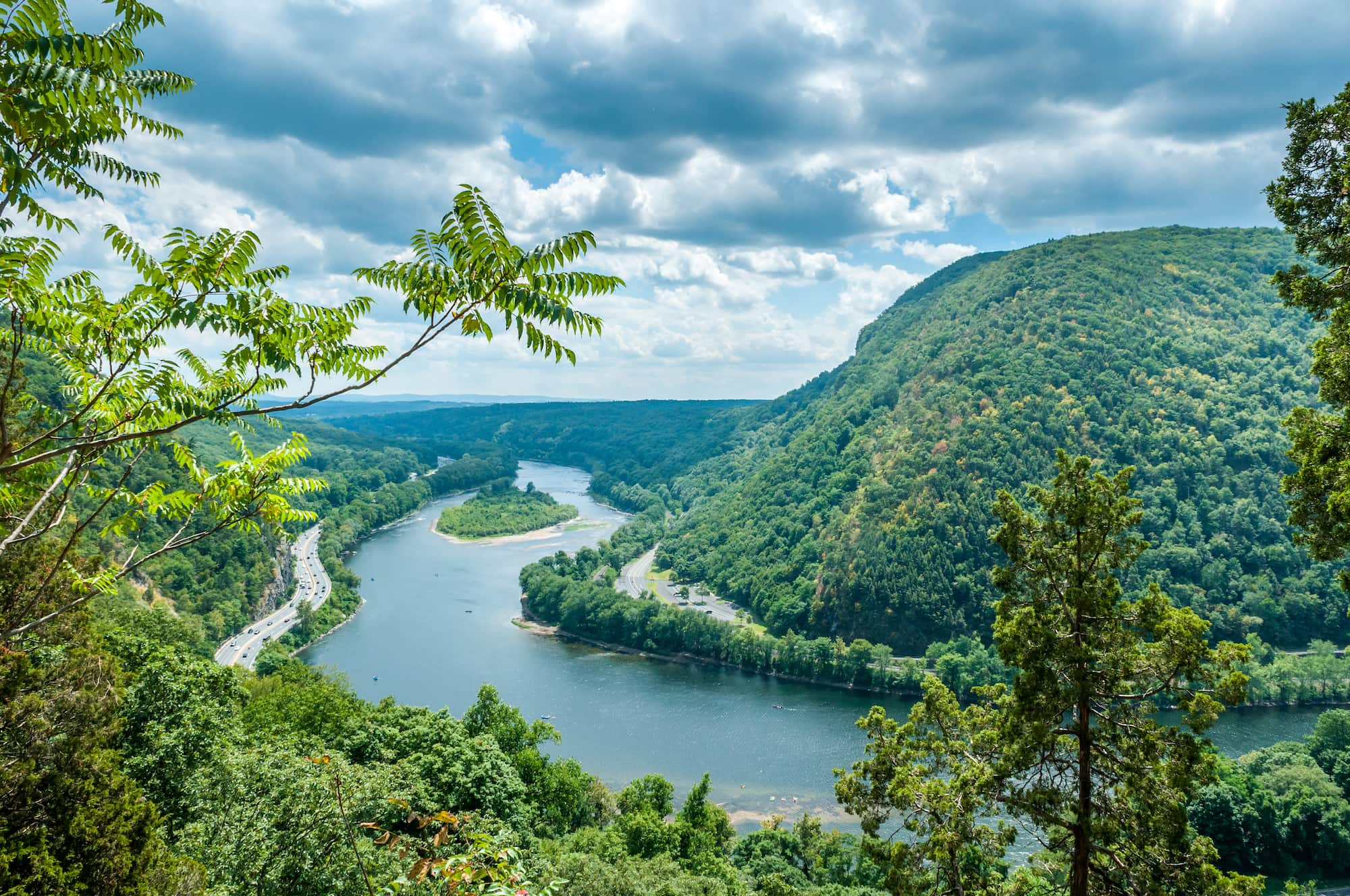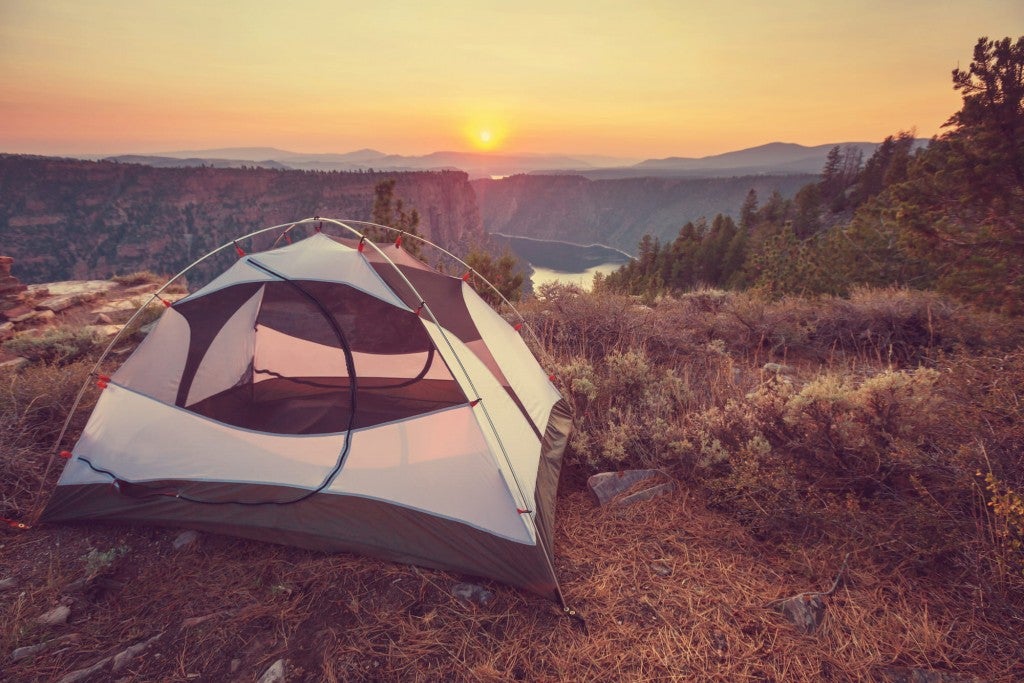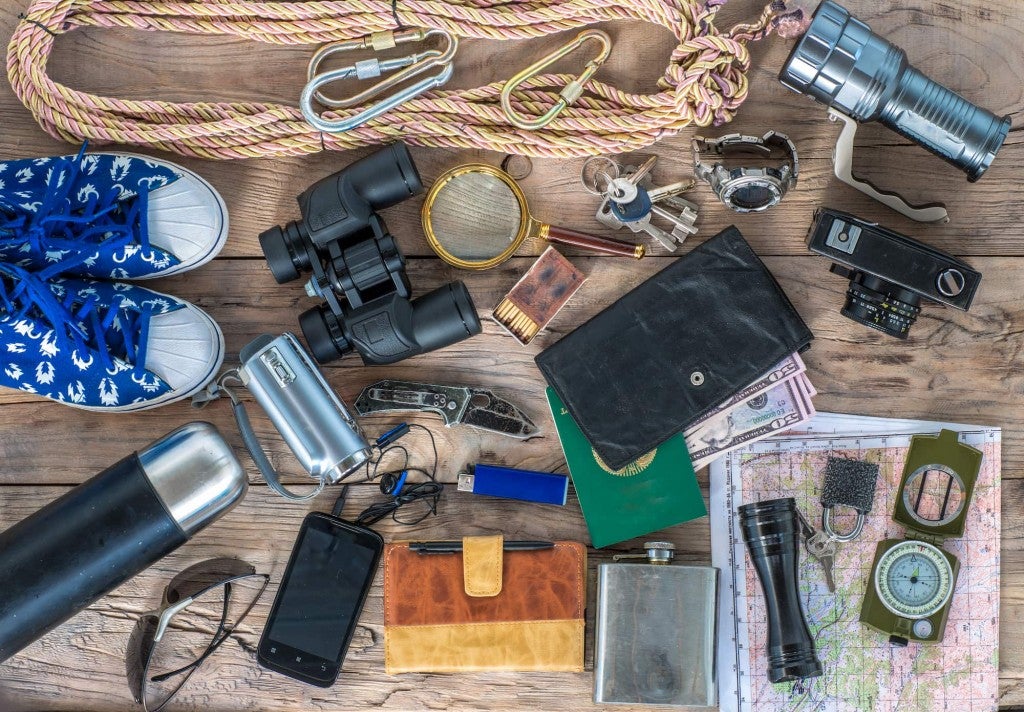This article on Delaware Water Gap camping is brought to you by RovR, whose high-end coolers are the perfect addition to your next Delaware River adventure.
Located between New Jersey and Pennsylvania is a slim river that slices through the Appalachian Mountains. Called the Delaware Water Gap, this long stretch of water makes up the southern end of one of the Northeast’s most prominent camping spots.
Rich in activities and easy to access, the Delaware Water Gap National Recreation Area is protected land that stretches from the Delaware River in New Jersey to the border of New York. At nearly 70,000 acres, the Delaware Water Gap area offers access to protected wilderness rich in history and recreational offerings.
Plan The Best Delaware Water Gap Camping Trip
It’s also a camper’s paradise. For those lucky enough to stumble upon the Delaware Water Gap, there is a plethora of options when it comes to camping out for the night— whether you’re looking for camping in Pennsylvania or camping in New Jersey.
Developed Campsites Near the Delaware Water Gap
There are three developed campgrounds in the Delaware Water Gap Recreational Area, each of which offers its own experience and access points to different portions of the 70,000-acre wilderness area.
1. Dingman’s Campground
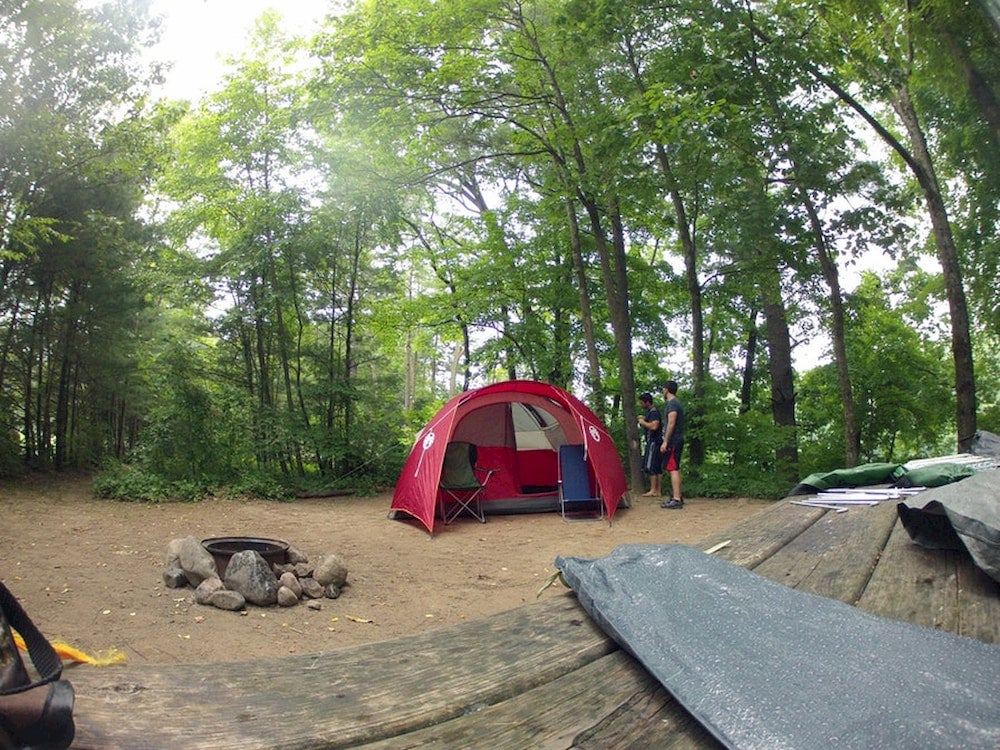
Image from The Dyrt camper Derek W.
Dingmans Campground is open from April to October and offers a whopping 133 campsites, which range in location from the thick forest to the river’s edge. Group sites can accommodate up to 40 campers, and the campground includes RV sites, only a handful of which have full hook-up capabilities.
Despite the large quantity of sites, Dingmans Campground is well-hidden from any major roadways, and the surrounding forest serves up plenty of solitude to crowd-conscious campers. The campground has amenities like a camp store and also offers sponsored river trips for families seeking a way to enjoy the Delaware River’s floatable waters.
2. Mohican Outdoor Center
Mohican Outdoor Center is the only campground in the Delaware Water Gap area that offers access year-round camping, making it a popular option in the off-season months. With only seven primitive sites that are reserved on a walk-in basis only.
The Mohican Outdoor Center also has Indian Point campsites: three tent platforms and two rustic ground sites. A visitor center with a gathering space, a fireplace, and showers are located close by.
For those looking for a higher-end camping experience, the Mohican Outdoor Center’s major offering is its cabins, which can accommodate anywhere between six and 16people. A dining hall and boathouse located on the property are also available for rent for large groups and wedding parties.
Perhaps the most unique of the Mohican Outdoor Center’s offerings are their guided trips, provided by the Appalachian Mountain Club. Choose from a variety of adventures including five-day family trips, weekend trips, and hut-to-hut hiking. This is a great way to bring your Delaware Water Gap camping experience to the next level.
3. Worthington State Forest Campground

Image from The Dyrt camper Rosie R.
Worthington State Forest Campground is the third car camping option located in the Delaware Water Gap National Recreation Area. It has close to 70 primitive campsites, some of which are located on the banks of the Delaware River. Sites are large enough to accommodate both tents and trailers though may be on the small side for RV campers. Group campsites are also available at the Worthington State Forest Campground and can fit up to 35 guests.
Along with excellent access to the Delaware River, the campground offers prime proximity to major trails in the area, including a 7-mile section of the Appalachian Trail. The Dunnfield Creek Natural Area is another prominent trail in the area, giving hikers the chance to journey along Dunnfield Creek through some of the state’s best natural forest.
Boat-In and Riverside Campsites
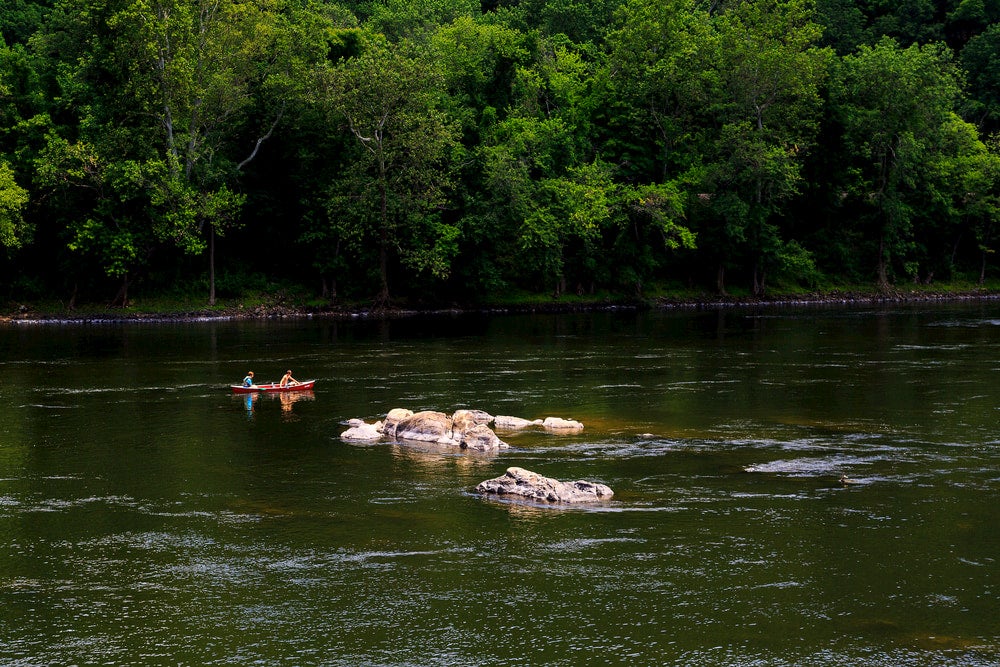
Fortunately for kayakers, boaters, and canoers, Delaware Water Gap camping also includes the option to stay right along the river. Although most campsites by the river are available on a first come, first served basis, there are a couple of options for boaters and kayakers looking to reserve a riverside campsite.
The Alosa River Campsites
The Alosa River Campsites are a cluster of six campsites reservable under special guidelines, as they are meant specifically for boaters traveling the river on long-distance trips. For a one-night stay at the Alosa River Campsites, boaters must be planning to travel at least 14 miles along the river. Due to the nature of the campsites, camping is limited to one night.
Rules for camping along the Delaware River are the same as backpacking. Fires are permitted in existing fire grates only, and trash, food and other waste must be packed out. Soap and other artificial substances are to be used on a limited basis and dumped in soil running away from the river.
A list of Delaware Water Gap riverside campsites is included below (from nps.gov):

Activities for Delaware Water Gap Campers
While you’re getting your feet wet in the Delaware Water Gap camping scene, take advantage of the vast array of activities the region has to offer alongside its spectacular campsites.
Climbing

Climbing continues to be one of the most popular ways to experience the Delaware Water Gap area. Almost all of the climbing requires trad gear but ranges in difficulty from 5.0 to 5.12d, making it a perfect place to climb for both beginners and experts.
Mount Minsi is the most popular of the trad climbing destinations on the Pennsylvania side of the river, offering a wide variety of routes and terrain.
On the New Jersey side, Mt. Tammany is the place to climb, featuring more than 100 easy-to-access routes. The rock at Mt. Tammany is metaquartzite and holds extremely well.
Ice climbing is also possible in the winter but is condition dependent.
Hiking
Hiking is one of the favorite activities in the Delaware Water Gap area, with dozens of hiking trails providing access to some of the region’s best views. The Mt. Tammany summit hike is a 3.4-miler that brings you to the top of one of the tallest points in the area. While it is a strenuous hike, the distance makes it doable with families and older children, particularly with some snack breaks built in.
Other hikes in the region include the Hornbecks Creek Trail, a family-friendly out-and-back that winds along the Creek, with excellent views of the wildlands and a spectacular waterfall at the trail’s end.
The Mount Minsi Loop is one of the longer hikes in the region at 5.2 miles. The trail intersects a portion of the Appalachian Trail and features several pristine viewpoints. This hike is particularly beautiful in the fall, when the rhododendrons are still in bloom and the colors are changing.
Fishing
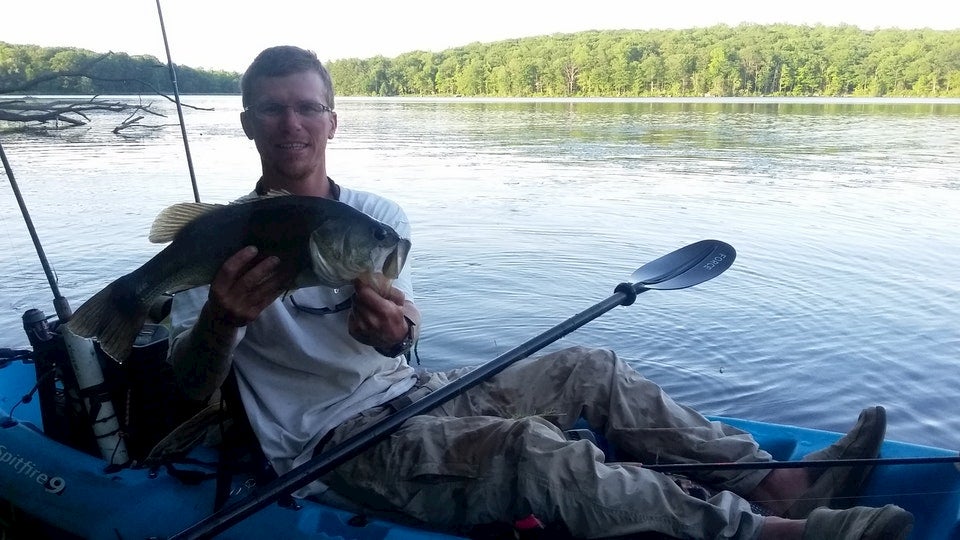
Image from The Dyrt camper Desiree N.
The wide range of fishing opportunities is a huge draw for outdoor enthusiasts and are sure to level up any Delaware Water Gap camping experience. The Delaware Water Gap National Recreation Area is home to more than60 species of fish, many of which populate the Delaware River. Among the most commonly caught are the American shad, brook trout native to the Delaware Water Gap region, and yellow perch.
Visitors interested in fishing will need to acquire a fishing license for either Pennsylvania or New Jersey when fishing in the Delaware River. For smaller streams that run alongside the Delaware River, a license is required for the state in which the stream is located.
Paddle Sports
Kayaking and canoeing is another popular activity in the region. The Delaware Water Gap permits kayaking and canoeing in the Delaware River year-round. For beginners to the sport, several companies in the Delaware Water Gap region off guided trips for rafting, canoeing and tubing.
Boating on the Delaware River is one of the best ways to view the Delaware Water Gap’s diverse ecological features, including populations of bald eagles, herons, deer, black bears and the multiple species of fish. Make sure you know where to baot because both calm water and whitewater exist on the Delaware River. As mentioned, a popular option for advanced kayakers and rafters is to camp along the river.
Planning an epic Delaware Water Gap camping trip this summer? Let us know at The Dyrt!
This post is brought to you by RovR

RovR’s ice cooler on wheels is the answer to all of your cooling needs. Bring one along on your next Delaware Water Gap camping trip!
Related Articles:
- Campgrounds in North Carolina
- Campgrounds in Virginia
- Cunningham Falls
- Glamping in New York
- Campgrounds in Maryland
- Camping in PA
Related Campgrounds
- Pine Barrens Camping, Wharton State Forest, NJ
- The Great Divide Campground, Newton, NJ
- Ocean View Campground NJ, Ocean View, NJ
- Winding River Campground, Mays Landing, NJ
- High Point Camp, Sussex County, NJ
Popular Articles:
Articles on The Dyrt Magazine may contain links to affiliate websites. The Dyrt receives an affiliate commission for any purchases made by using such links at no additional cost to you the consumer.

